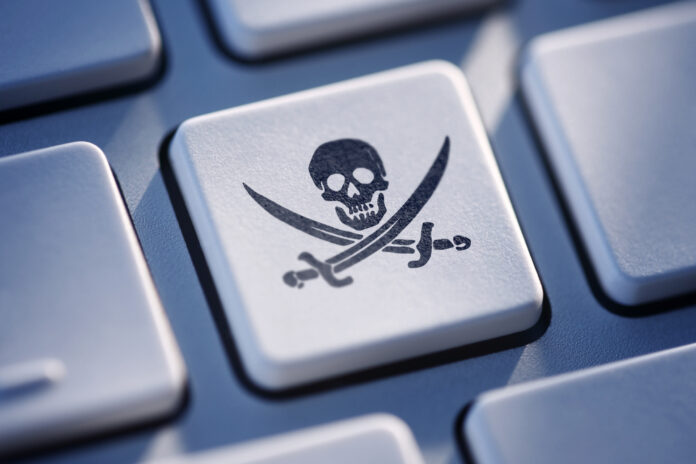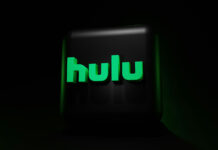
The entertainment industry is experiencing a boom thanks to the wildly competitive world of digital streaming services. Across the U.S. and around the world, people can now turn to Apple TV, Netflix, Disney+, and other streaming content providers to watch the latest and greatest movies, series, and documentaries from their homes.
While the internet allows the entertainment industry to distribute its work directly to consumers, it has also opened a seedy underworld of stealing the industry’s intellectual property.
Here, we present a timeline of digital piracy, the major events that contributed to the distribution of illicit content, and how these events helped shape today’s online piracy.
Defining Online Piracy
Interpol, International Criminal Police Organization, defines online piracy as “the illegal copying or distribution of copyrighted material via the Internet.” In other words, online pirates illegally copy, sell, and distribute digital property, such as music, movies, and video games, infringing on the owners’ rights and violating copyright laws.
What was initially limited to the software industry, with computer hackers copying and distributing computer programs and video games, now touches all internet-based content and devastates the U.S. and the global economies.
Many music and software pirates do not see the criminality of their deeds because they follow the philosophy that anything on the internet is free and has open access. What they don’t understand is every use of illegal content takes money out of the pockets of hardworking artists. It impacts everyone from the CEOs of media empires to anyone employed in producing the digital material. The trickle-down effect of pirated material on the global movie industry accounts for more than $50 billion in revenue losses.
What major events or technological breakthroughs led to digital piracy, and what can be done to stop it? Keep reading to understand how online piracy has become a global crisis.
Timeline of Online Piracy
1993: Digital Watermarks
First used in 1993, digital watermarks are designed to protect digital documents from copyright infringement. The process involves embedding a watermarked logo or sequence of numbers onto an image or other digital document to deter piracy. In many cases, purchasing the rights to the file will grant users access to a version without a watermark.
1995: MP3
According to one of the initial developers, MP3 technology was released years earlier but didn’t catch on until 1995. MP3 technology created a method to compress audio and video into files small enough to transfer between computers easily.
The new technology sparked the imagination of forward-thinking users who began making commercial music available on their websites for anyone to download. It was the start of pirated music and, ultimately, the beginning of the digital copyright wars.
1998: The Digital Millennium Copyright Act (DMCA)
The Digital Millennium Copyright Act (DMCA) was enacted on October 28, 1998, to update copyright laws for the digital age. Primarily, the act makes it illegal to bypass digital protections to protect entertainers and the work’s creators and owners from copyright infringement. DMCA established that the unauthorized use, reproduction, or distribution of copyrighted material violates the exclusive digital rights granted to the copyright owner and is illegal.
1999: Napster
Napster took the MP3 technology and created a peer-to-peer file-sharing system that is attributed to revolutionizing the music industry. The system became wildly popular for its ease of use and for providing a method for downloading and sharing music files for free.
As its popularity grew, so too did music piracy and legal woes for the company. Napster lost multiple copyright infringement lawsuits, including one by the Recording Industry Association of America (RIAA), and ceased operations in 2001. However, Napster pioneered file-sharing technology for distributing digital media and opened the door for BitTorrent and other decentralized file-sharing concepts that still exist today.
Early 2000s: BitTorrent
BitTorrent is both a communication protocol and the name of the company that originally developed the method for transferring large files. Initially released in 2001, the protocol’s popularity led the way for “torrenting” to share movies, software, and other large digital content files. It also spawned torrent trackers, like The Pirate Bay, to facilitate file sharing.
The protocol’s ease of transferring large files gave movie, media, and software piracy hackers a faster way to distribute their large files. Just as Napster caused a stir in the music industry, BitTorrent did so to the movie industry. The increase in the internet piracy of movies raised concerns over the legitimacy of BitTorrent and torrenting in general.
Torrenting is legal as long as the content is legally distributed. Distributing copyrighted material without the copyright holder’s permission is illegal and is classified as piracy. Warez are pirates who strive to be the first to download a newly released or not yet released movie and wreak havoc on the movie industry.
BitTorrent is working on the next generation of torrent products, creating yet another issue for media companies and consumers to be wary of.
2006-2007: Netflix, Amazon Prime Video, Hulu and the Rise of Streaming Services
Although Netflix was already in the marketplace for DVD rentals, it evolved its business model to become a subscription streaming service. In 2006 and 2007, Amazon and Hulu joined the streaming service market, bringing libraries of movies, TV shows, and other content to viewers to watch from the comfort of their homes any time they desired.
The services’ popularity brought even more streaming options, including YouTube TV in 2017 and, most recently, Apple TV and Disney+. However, more users were looking for free legal streaming sites, which led to the launch of legitimate free services like Freevee and Pluto.
It also led to the launch of sites providing pirated content. Illegal streaming sites distribute copyrighted content without proper authorization, exposing users to harmful malware, ransomware, and, potentially, legal consequences.
2010 and Beyond: Social Media
TikTok, YouTube, X (formerly Twitter), Facebook, and Instagram are filled with illegal live streaming of major sporting events and movies where pirates hijack pay-per-view footage or from other streaming services to social media platforms. Viewers may inadvertently contribute to online piracy by viewing content while unaware the content providers have not received proper authorization.
Social media content can quickly go viral, attracting countless viewers almost instantaneously. For social media pirates, the more views, the better. They profit from user traffic and engagement, making social media piracy lucrative and pervasive.
What’s Next for Digital Piracy
Experts believe education and deterrence are effective for fighting back against digital piracy. Educating the public about the widespread impact of piracy on the economy and every user’s role can minimize blatant and inadvertent viewership.
New technology, like AI, can be an effective anti-piracy strategy. Although much information focuses on the negative implications of AI, like job loss and inaccurate information, AI may play a role in deterring online piracy. Forbes reports advances in AI techniques to identify and take down pirate streams are on the horizon.
Digital piracy evolves with the opportunities that new technologies create, making it important for anti-piracy efforts to evolve as well.
Stay Safe from Online Piracy with StreamSafely
Online pirates are deceptive, and you may not even know you are watching illegal content. StreamSafely educates our readers to help deter and eliminate viewing of pirated material.
- Keep yourself and your family safe by learning which streaming sites are safe and legal and which are not.
- Learn how to create strong passwords and why you shouldn’t share passwords with others.
- Find out where to watch the best live sports programming via popular sports streaming services.
- Read our tips for “How to Know if a Web Page is Illegal.”
StreamSafely provides all the tools to keep your streaming experience safe and secure. We’ll help you find a reliable streaming platform to watch your favorite content safely.





